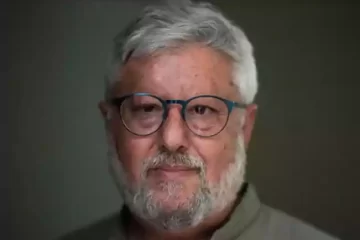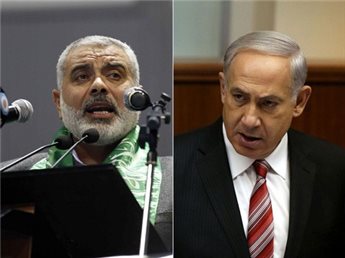Not one country in the world recognises our capital, Jerusalem, as the capital of Israel. Even the United States footnotes the following on the State Department Web page: Israel proclaimed Jerusalem as its capital in 1950. The US, like nearly all other countries, maintains its embassy in Tel Aviv. UN Security Council Resolution 478 declared the 1980 Jerusalem Law that declared Jerusalem to be Israel’s “eternal and indivisible” capital null and void, affirming that it was a violation of international law.
The European Union is debating its own position on Jerusalem. The debate is a much better reflection of the reality of Jerusalem than any of the governing politicians in Jerusalem have the courage to admit. After lying to the public for 42 years about Jerusalem being the united eternal capital of Israel, it is time to admit there are two Jerusalems—one Israeli and one Palestinian. Even Teddy Kollek, the 20th century Herod, admitted in 1988 that “coexistence in Jerusalem is dead”. This was a great blow for the man who believed he had united the city.
Since the birth of the State of Israel, Jerusalem has never been united. From 1949 to 1967, it was divided by a wall and barbed wire, and since 1967 it has been divided politically, culturally, ethnically and nationally. While it is true that the massive Israeli annexation of land and building in what was once called east Jerusalem has changed the definitions of the division, with a near Jewish majority in east Jerusalem, the geography is not the proper definitive term. It is more correct to speak about Israeli Jerusalem and Palestinian Jerusalem.
Let’s admit it to ourselves, we, as Israelis, don’t really care about the Palestinian parts of Jerusalem. Even though they have been under our rule for the past 42 years, we don’t treat them as equal parts of the city. They do not receive nearly the same services as Israeli neighbourhoods. Their educational system is backward, under funded, crowded and incapable of filling the needs of the people there. Today, one of Jerusalem’s Palestinian neighbourhoods, Kafr Akab, is located beyond the separation wall after the Kalandiya checkpoint.
We have to sincerely ask ourselves: Do we really want the Shuafat refugee camp as part of the eternal undivided capital of the State of Israel? To the best of my knowledge we do not chant: If I forget thee Umm Tuba, let my right hand wither, or by the waters of Babylon, we sat and wept when we remembered thee Jebl Mukaber.
We do not say: Next year in Walaja and we certainly do not pray for the peace of Sur Bahir. For Beit Hanina’s sake, I will not be silent.
In a way, we are fortunate that the city is so segregated—it makes its political partition possible. As a member of prime minister Ehud Barak’s expert committee on Jerusalem prior to the Taba summit in January 2001, we sat around a large aerial photograph and drew lines of division of sovereignty, based on the Clinton parameters for Jerusalem which stated: what’s Jewish to Israel, what’s Arab to the Palestinians. We were instructed by the prime minister to design Israel’s strategy for the future of Jerusalem on that basis, and it can be done.
Of course, the most sensitive part of Jerusalem is the Old City. It is less than one square kilometre and is composed of four quarters—the Muslim (the largest quarter by far), Christian, Armenian and Jewish. There are two possible solutions for the Old City: a special international regime which would protect and guarantee the rights and the security of all within its walls or the application of the Clinton parameters to it—meaning that the Palestinians would have sovereignty over the Muslim, Christian and probably the Armenian quarters and Israel would have sovereignty over the Jewish Quarter.
The heart of the heart of Jerusalem is the Temple Mount/Haram al-Sharif. For the Muslims, it is their third most holy place. Here Ibrahim brought Ishmael for sacrifice (according to their tradition) and here the prophet Muhammad ascended to heaven to begin receiving the revelation of the Koran. For Muslims, the commandment of haj is not complete until visiting Jerusalem after Mecca and Medina.
For Jews, it is the most holy place. Wherever Jews are in the world they face Jerusalem in prayer and within Jerusalem, they turn their prayers to the Temple Mount. Current and long-standing Halacha, and the decisions of the Chief Rabbinate and the important haredi rabbis, is that Jews should not enter the Temple Mount. The reason is that we don’t know the location of the Holy of Holies and the rabbis want to prevent the site from becoming impure.
Since 1967, Israel has claimed sovereignty over the Temple Mount, but in practice it is controlled by the Muslim authorities. It would be completely possible to turn the status quo into de facto Muslim sovereignty and from the Jewish point-of-view, we could easily say that when the messiah comes, the terms of sovereignty can be changed (if so desired by God).
Recognising that Jerusalem is two cities is the first step to making peace with the Palestinians and the Arabs. Jerusalem should not be left for the end of the process. The Europeans got it right—peace begins with Jerusalem. The walls and fences that have been built in the city over the past years must come down. The only walls that should remain are those around the Old City.
Jerusalem will become a place of great international importance—when there are over 150 embassies in the city (that could serve two states) and it is open, modernised, environmentally conscious, as cities of international importance are. Then, it will not only be the city of peace, it will also be a much more pleasant city in which to live.
Resolving that Jerusalem will be the capital of two states is not only doable, it is the only way that Jerusalem will be recognised as the capital of Israel.


